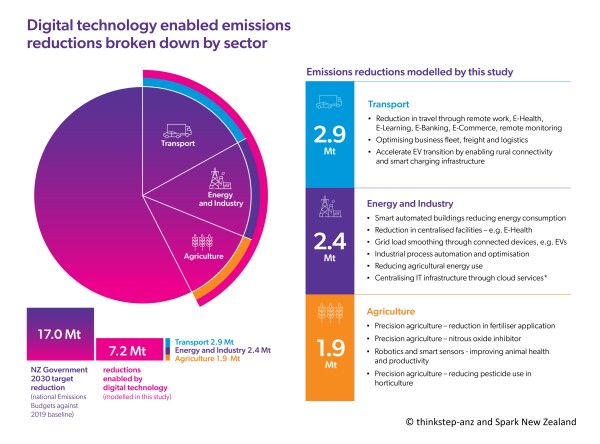Our joint report with New Zealand telecommunications company Spark explores the role of digital technologies in reducing emissions. Meeting the climate challenge through digital technology combines modelling by our thinkstep-anz experts, the Climate Change Commission and Spark, and global research.
The results show that digital technology could help reduce emissions by more than 7 million tonnes by 2030 – equal to 42% of the emissions that New Zealand needs to reduce over this period.
Our thinkstep-anz CEO Barbara Nebel says, “The study shows how important data is to make the right decisions to drive change. Analysing data on this study has helped us identify the sectors and solutions where digital technology offers the greatest potential to help decarbonise Aotearoa New Zealand. It’s been an exciting project to work on with Spark, and it may help us meet our crucial national goal – net-zero by 2050.”
Our webinar shares more
Our 23 November webinar had the report’s authors explain the findings and what it means for the future. Tom Newitt, Spark’s Sustainability Lead, and Emily Townsend, our Head of Life Cycle Strategies, gave a 30-minute presentation and answered questions. Watch a replay of this webinar.
The biggest opportunities
The most significant opportunities to reduce emissions through digital technology lie in New Zealand's three largest emitting sectors:
- transport (2.9 Mt reduction modelled)
- energy and industry (2.4 Mt)
- agriculture (1.9 Mt)
While the report focuses on New Zealand, many findings apply to Australia and the rest of the world.
Media coverage of the report and launch
- New Zealand Herald – Tech snub in emissions targets an ‘oversight’ - Minister for Climate Change James Shaw
- Newsroom – Spark ignites a push to net zero
- National Business Review – Digital technology take-up key to reaching carbon reduction goals
